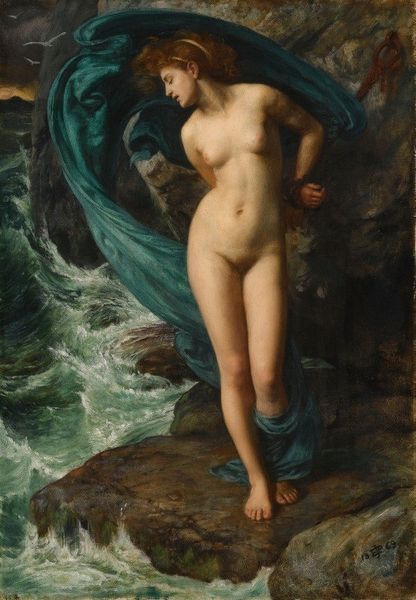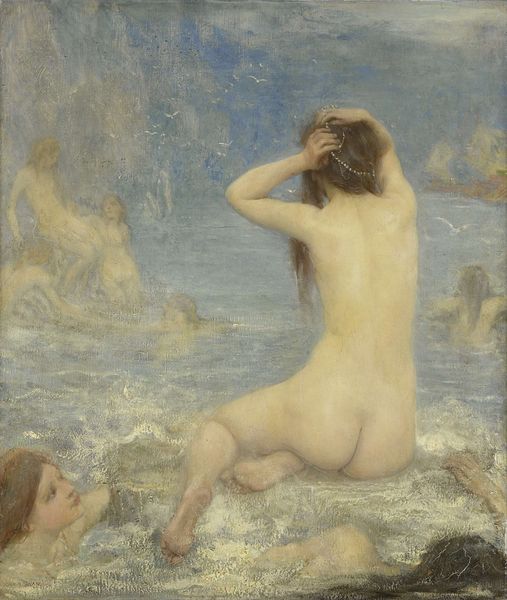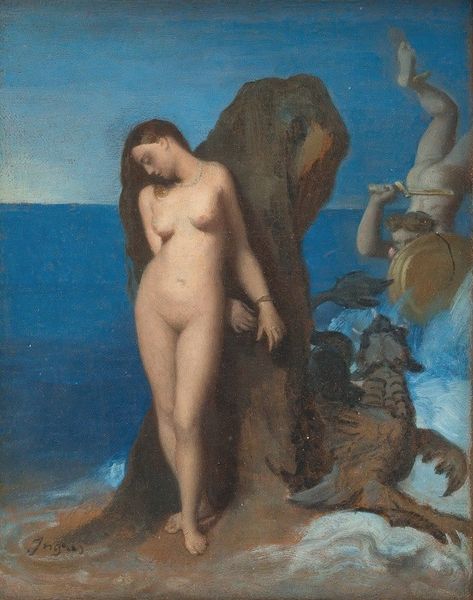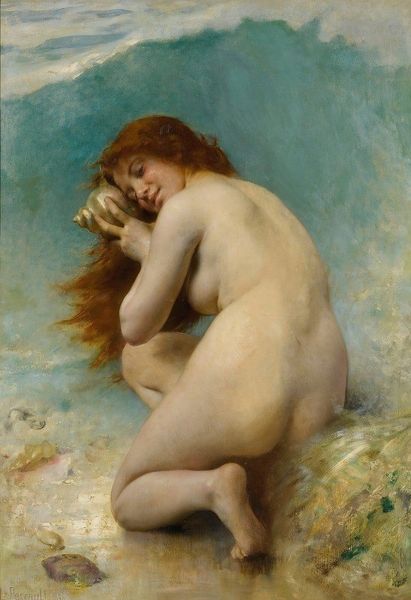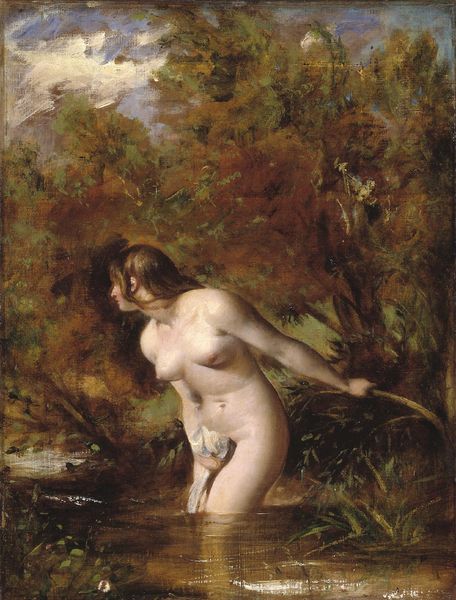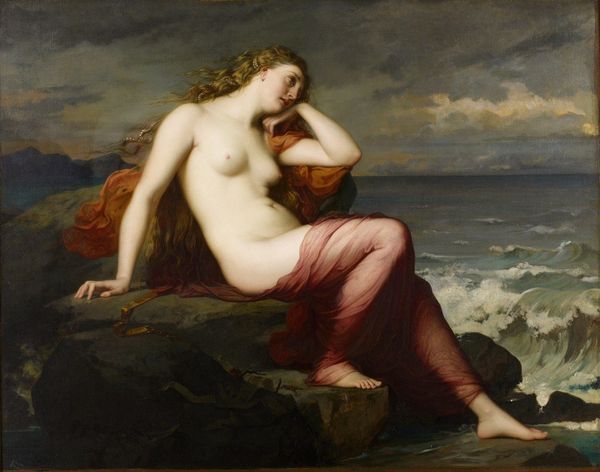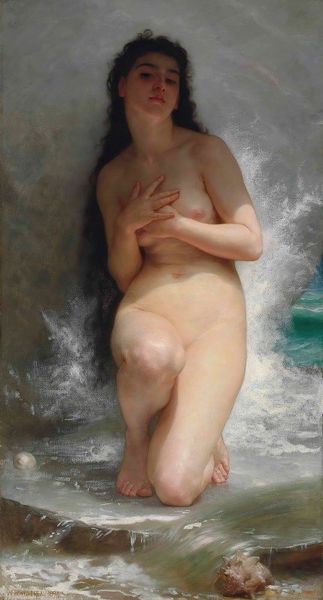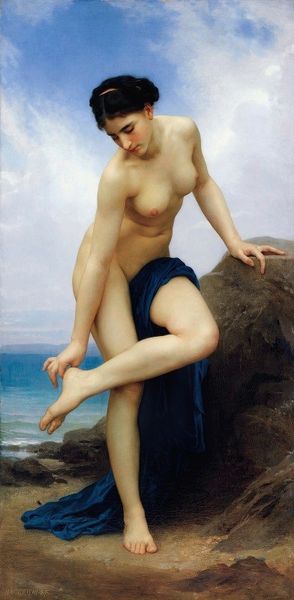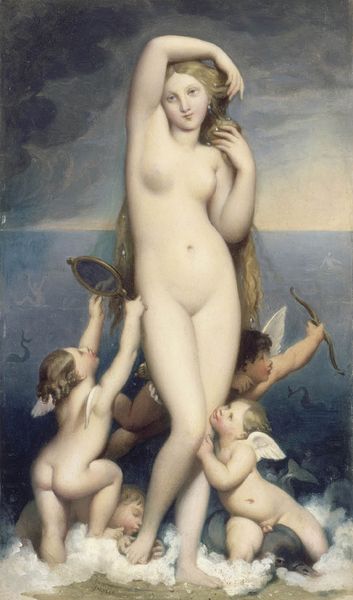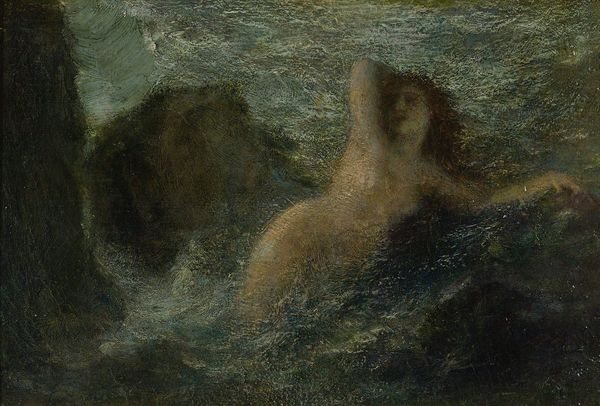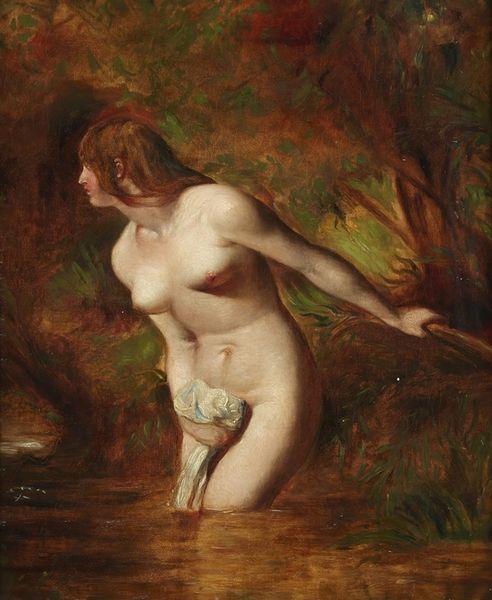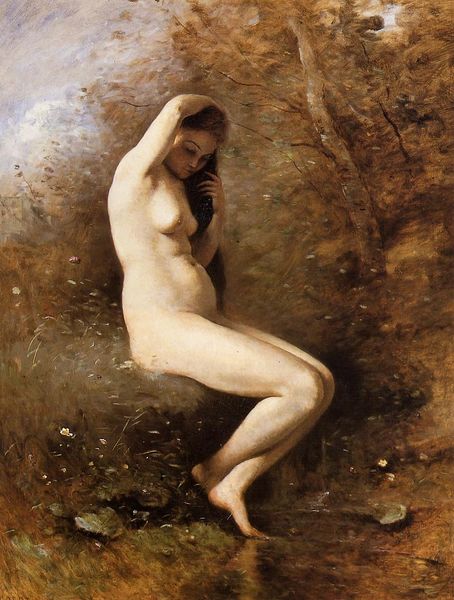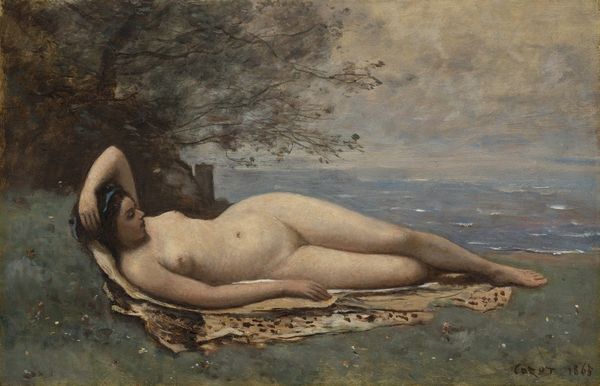
Copyright: Public Domain: Artvee
Editor: We’re looking at Gustave Courbet’s "The Woman in the Waves" from 1868, rendered in oil paint. It’s incredibly striking – the woman emerging from the churning sea evokes a sense of vulnerability. What stands out to you as you look at it? Curator: The enduring power of the ocean as a symbolic space, a place of both creation and destruction. Courbet seems keenly aware of this dichotomy, doesn't he? Note how the woman's pose is reminiscent of classical depictions of Venus, the goddess born from the sea. But there's a rawness, a directness here that departs from idealized beauty. Editor: So you see a tension between the classical allusion and the realistic depiction? Curator: Precisely! The symbolism of water is profound across cultures. It signifies purification, rebirth, the unconscious. Here, it feels as though Courbet is plunging us into a visceral experience, questioning the established norms around representing the female form. Do you notice any other interesting visual elements that echo traditional depictions of similar subjects? Editor: I see a small sailing ship in the background… does that fit into this symbolic understanding? Curator: Good observation. That tiny ship accentuates the scale, making her feel both monumental and vulnerable against the vastness of nature. It also adds an element of journey, perhaps mirroring the woman's own journey of self-discovery, or the viewers for that matter. Editor: I never thought about it like that. Now, it's far more compelling. Curator: These symbols are constantly in flux, depending on cultural shifts and psychological needs, and this piece challenges those assumptions. Editor: I’m glad you pointed all of this out – I now see much more than just a painting of a woman in the ocean!
